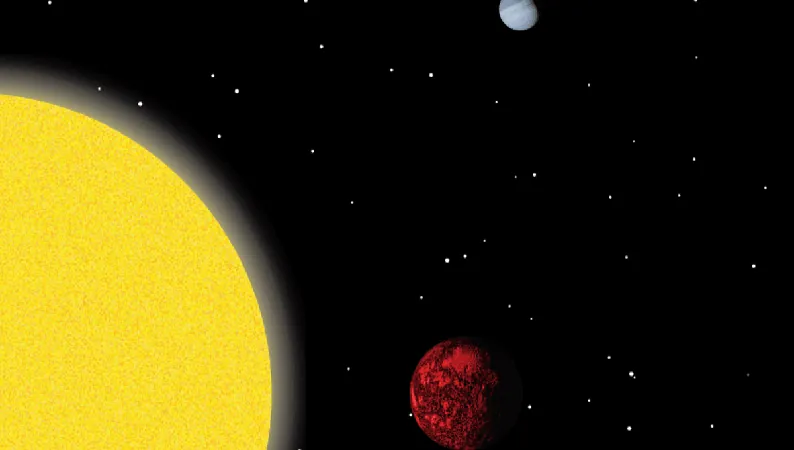
Record-Breaking Planet Discovered: Is This the Future of Earth-Like Worlds?
2024-11-18
Author: Yu
Record-Breaking Planet Discovered: Is This the Future of Earth-Like Worlds?
An international coalition of astronomers has made an astonishing discovery: a new planet situated 750 light-years away from Earth, orbiting a Sun-like star in the K2-360 system. Dubbed K2-360 b, this extraordinary celestial body is now recognized as the densest ultra-short period planet ever found, orbiting its star in a mere 21 hours.
K2-360 b boasts a radius almost 1.6 times that of Earth, translating to a volume roughly four times greater. However, its mass is astonishingly 7.7 times that of Earth, leading to a density nearly double that of our home planet—equivalent to that of lead. “K2-360 b is truly remarkable – it’s as dense as lead, packing nearly 8 Earth masses into a ball only slightly larger than our planet,” stated lead author John Livingston from the Astrobiology Center in Tokyo.
This rocky super-Earth is likely engulfed in a sea of molten rock due to its extreme proximity to its star. Interestingly, scientists theorize that it may have once harbored a thick gaseous atmosphere similar to that of Uranus or Neptune, which was likely stripped away over time as the planet spiraled inward closer to its host star. Co-author Davide Gandolfi from the University of Turin remarked, “This planet gives us a glimpse into the possible fate of some close-in worlds, where only the dense, rocky cores remain after billions of years of evolution.”
The K2-360 system also contains a second planet, designated K2-360 c. Unlike its inner counterpart, K2-360 c does not transit in front of the star from our perspective, indicating that its orbit is skewed relative to K2-360 b's. By analyzing the variations in starlight, astronomers estimate that K2-360 c is about 15 times the mass of Earth and completes an orbit in 9.8 days. It is posited that K2-360 c may have played a crucial role in shaping the orbit of K2-360 b.
“Our dynamical models indicate that K2-360 c could have pushed the inner planet into its current tight orbit through a process called high-eccentricity migration,” explained co-author Alessandro Trani from the Niels Bohr Institute. This complex gravitational interaction involves changes that first cause the inner planet's orbit to become elongated and, after time, gradually circularize it closer to the star, likely aided by tidal forces.
The extraordinary density of K2-360 b is believed to stem from a massive iron core, which constitutes an astonishing 48% of the planet's overall mass—nearly equivalent to four times the mass of iron found on Earth. Co-author Mahesh Herath, a PhD candidate at McGill University, noted, “Our interior structure models indicate that K2-360 b probably has a substantial iron core surrounded by a rocky mantle. Its surface may be covered in magma due to the intense heat it receives from its star. Understanding planets like this helps us piece together how terrestrial planets form and evolve under different conditions throughout the galaxy.”
This groundbreaking discovery opens up new avenues for understanding planet formation, particularly for rocky worlds in extreme environments. Could K2-360 b be a blueprint for understanding the evolution of other super-Earths within our galaxy? As we continue to explore the cosmos, the implications of such findings may redefine our understanding of planetary systems and their potential for hosting life. Keep your eyes on the skies; more surprises may be just around the corner!



 Brasil (PT)
Brasil (PT)
 Canada (EN)
Canada (EN)
 Chile (ES)
Chile (ES)
 España (ES)
España (ES)
 France (FR)
France (FR)
 Hong Kong (EN)
Hong Kong (EN)
 Italia (IT)
Italia (IT)
 日本 (JA)
日本 (JA)
 Magyarország (HU)
Magyarország (HU)
 Norge (NO)
Norge (NO)
 Polska (PL)
Polska (PL)
 Schweiz (DE)
Schweiz (DE)
 Singapore (EN)
Singapore (EN)
 Sverige (SV)
Sverige (SV)
 Suomi (FI)
Suomi (FI)
 Türkiye (TR)
Türkiye (TR)